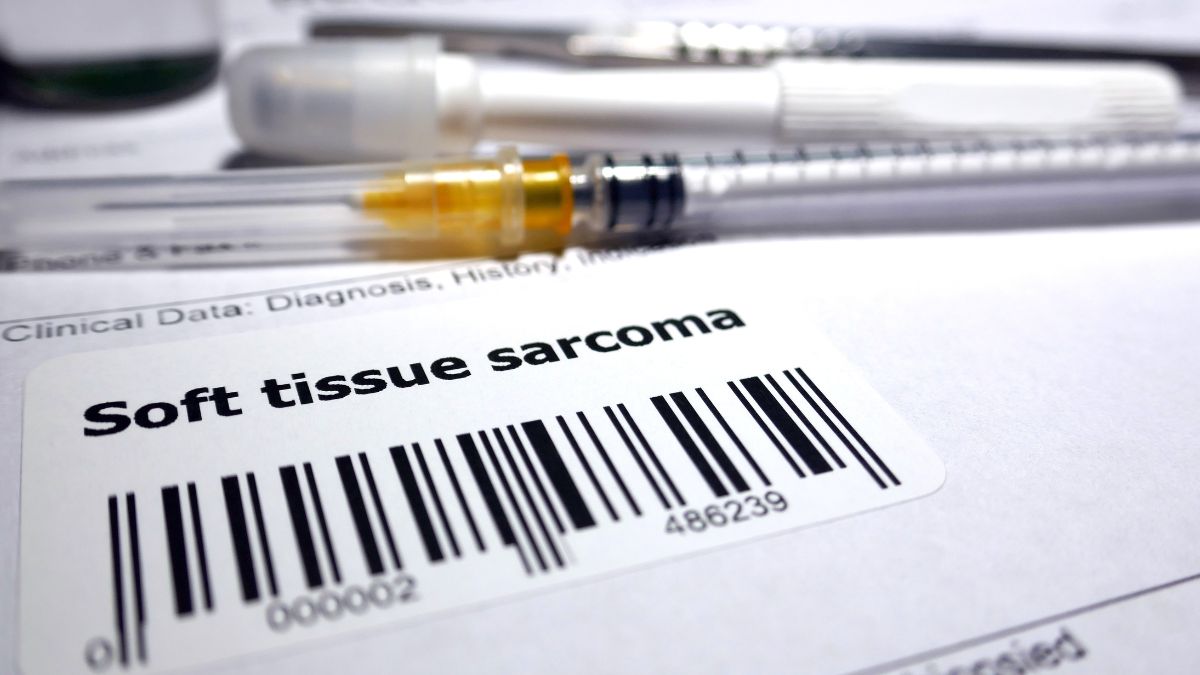- By Bornika Das
- Thu, 03 Jul 2025 07:43 PM (IST)
- Source:JND
Soft tissue sarcomas are a rare but serious group of cancers that can develop in the muscles, fat, nerves, blood vessels, and other connective tissues of the body. Unlike many common cancers, these tumours often grow silently and painlessly in deep tissue, making early detection particularly challenging. While they account for only about 2 per cent of all cancer types, their ability to remain unnoticed until they reach an advanced stage makes awareness of the early warning signs absolutely critical. They are most common in children with a 10-15 per cent incidence. Ranging from low to high grade, these sarcomas can significantly impact an individual’s health and quality of life due to their propensity to grow very rapidly and spread to other parts of the body.
A subtle lump, swelling, or unexplained growth that persists or increases in size could be your body’s first signal that something is wrong. It is important to recognise early symptoms that may seem harmless but could indicate something more serious. In conversation with The Daily Jagran, Dr. Srimanth B.S., Lead Consultant – Orthopaedic Oncology at Manipal Hospital Old Airport Road, Bengaluru, shares the early warning signs of soft tissue sarcomas.
Signs And Symptoms Of Soft Tissue Sarcoma
Swelling is generally considered the most common symptom. If a swelling is larger than 5cm—about the size of a lemon—or is progressing rapidly over a few weeks to a month, it can be an important warning sign. Dr. Srimanth B.S states, “However, these longstanding symptoms may sometimes indicate subtle tumours or collections of fat or tissue, rather than a sarcoma. The second associated symptom, although uncommon, is pain.”
ALSO READ: Sarcoma Awareness Month: Doctor Shares Subtle Signs That Must Not Be Ignored
Soft tissue sarcomas only occur in the soft tissues and take time to grow and spread. As a result, they rarely come into contact with structures like bones, muscles, blood vessels, tendons, ligaments, and other tissues, where they might exert pressure or invade, and cause pain. However, pain is considered an advanced warning sign for sarcoma. Additional symptoms in later stages include weight loss, muscle atrophy around the sarcoma, wasting of the body or affected area, and loss of appetite.
Dr. Srimanth B.S says, “At times, an individual may notice a very inconspicuous small growth—less than 5cm in size—that remains unchanged over many years or even decades.” When such tumours suddenly grow or change in size over a month or a few years, they are often referred to as a secondary sarcoma setting. On average, less than 1 per cent of such quiescent tumours turn into cancers after a long-standing period of inactivity. This is why rapid progression or an increase in size beyond 5cm, either in a new or in pre-existing tumour, should be recognised as a potential sign of cancer transformation, also known as sarcomatous transformation.

Symptoms Of Sarcoma (Image Credits: Canva)
In some cases, soft tissue sarcomas may develop superficially—just beneath the skin—or near muscles. They tend to grow rapidly, either inward or outward. If the latter occurs, the tumour may ulcerate, bleed, or present as a fungating mass, often impairing quality of life and causing persistent bleeding. These should be recognised as warning signs of a soft tissue sarcoma, rather than a benign or inconspicuous tumour or swelling.
ALSO READ: Sarcoma In Children: Expert Explains Treatment Therapies For Recovery
Some soft tissue sarcomas may be very subtle—often smaller than 5cm—and can arise in deeper regions such as the pelvis, the retroperitoneal area (behind the abdomen), or less noticeable areas like the depths of the thigh or leg. Dr. Srimanth B.S mention, “They only become apparent when they grow to around 10, 15 or even 20cm. In some cases, patients present with lymph node swelling, which occurs when cancer spreads from the primary site to the draining area.” If the lymph nodes appear unusually large and do not resemble a typical infection, scans are performed for further analysis. These findings may indicate a soft tissue sarcoma in another draining region—often in the aforementioned deeper locations—and are considered signs of advanced disease.
The above signs and symptoms indicate an aggressive disease and will require further evaluation with investigations such as a simple X ray, Ultrasound, and MRI followed by a biopsy or even a PET-CT scan to understand the nature and stage of the problem. For best results, one should not panic, but ensure to visit the nearest centre with experience in cancer diagnosis and treatment.
